








MIDWEEK UPDATE 27 JANUARY 2021    COVID 19 REGULATIONS, INITIATIVES AND AEROCLUB NEWS AERO CLUB MEMBERSHIP RENEWAL TIME Dear Aero Club Member, It is the Aero Club and Members Association renewal time for the year 2021. Please note that we had a payment system glitch related to credit card payments that has been resolved as of 7 Dec 2020. Many thanks for your continued support for recreational aviation in South Africa. Although the current year was supposed to be a significant milestone for the Aero Club as our centenary year, we were not able to celebrate as planned. We were at least very active in securing our ability to fly during the lockdown period and made significant progress in engaging with the regulator. We will continue to build on this relationship to improve the overall service standards and work on regulatory improvements. To renew your membership or join the Aero Club and its sections go to www.aeroclub.co.za where you can use the Aeropay System, or you can pay via EFT. See below your pro-forma invoice for your current Aero Club fee and other section fees. The Aero Club fee has seen a small nominal increase (from a previous reduction applied for 2020) and section fees have either remained the same or have also applied nominal increases. We continue to manage our budgeted finances to apply our resources to facilitate advocacy matters with the regulator with collaborative support from the sections. Please review and renew your membership as per the payment methods noted. If you have any difficulties, please contact the Aero Club office by email or phone as given below: - Sandra and Charne are ready to assist. Tel: 011 082 1100 Tel: 011 082 1100 Fax: 086 635 3755 E-mail: office@aeroclub.org.za www.aeroclub.co.za  THE AERO CLUB CENTENARY YEARBOOK 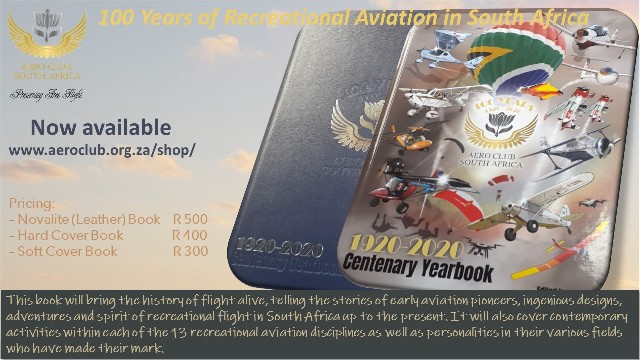  MORE PRIZES ADDED - THE CHOCK NORRIS AVIATION THEMED PHOTO CONTEST 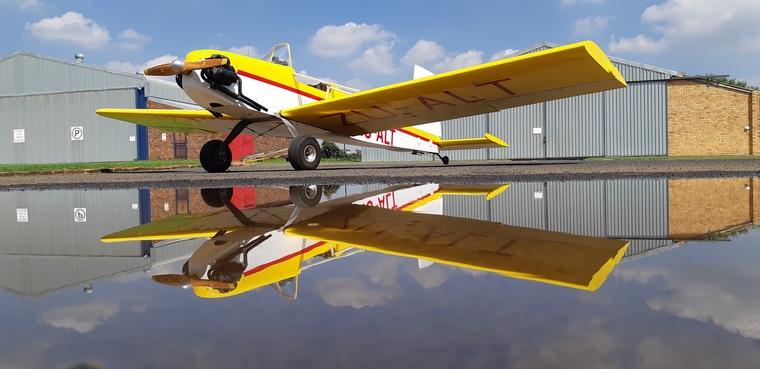 The December winner is Michael Crause with this wonderful reflection photo of his VP Vote now for January week four finalists 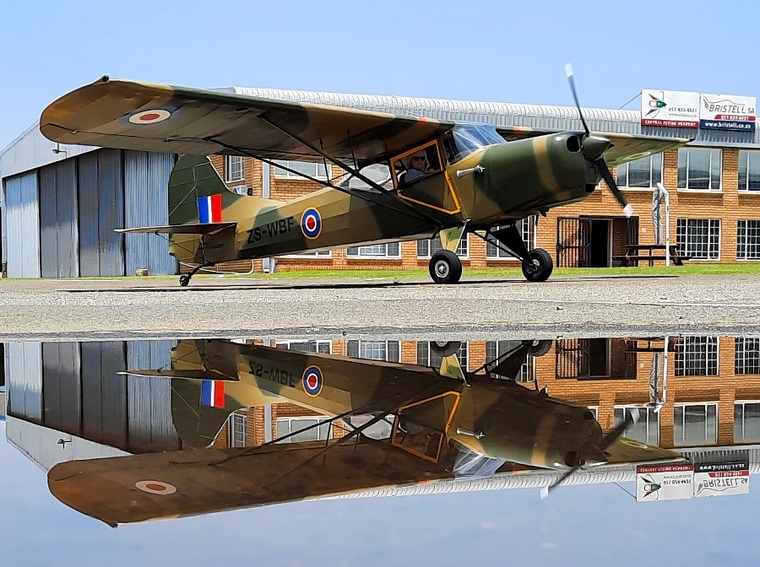 Vote for JanW4.1 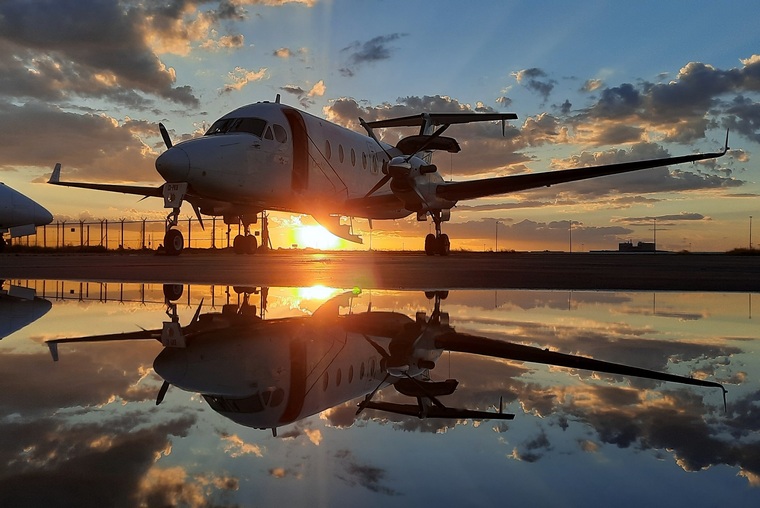 Vote for JanW4.2 How to Enter: Entering your aviation related photo is easy and simple. All images must be emailed to pilotspost@gmail.com with the following detail included: Your name, Email address, Telephone number, Where the photo was taken, Phone used, A theme name of the photo (Optional). Due to the large number of entries we expect, Pilot's Post will not acknowledge your entry!! Entry Rules: 1. When entering the competition and by sending your photo to Pilot's Post, you explicitly grant the publication of your submitted photograph at Pilot's Post team's discretion without any remuneration or obligation to you. 2. Submitted photos must be resized to be less than 1 megabyte in size. If full-size photographs are required, the Pilot's Post team will request them from you. 3. Only photos taken with cell phones will be accepted. 3. All submissions must have an aviation theme. 4. Photo submissions may be cropped and / or resized only. Any other form of photo alteration or manipulation is not allowed and will be disqualified. 5. You may submit up to three entries per week. Judging: 1. The Pilot's Post team will select the 2 best photos submitted every week and add them into our "Midweek Update" published every Thursday morning, where our readers will then cast their votes by simply clicking the link below the photo of their choice. 2. At the end of each month, a complete article will be published on Pilot's Post to include the weekly photo submissions with the most reader votes. Our readers will then again have the opportunity to cast their votes by simply clicking the link below the photo of their choice. The photo with the highest number of votes will then be judged the Winner of the Month. 3. A prize of a set of Chock Norris personalised Aircraft Chocks with leather storage bag valued at R500 and a voucher from the Pilot Shop valued at R200.00 will be awarded to each monthly winner and a soft cover copy of the Aero Club of South Africa's Centenary Yearbook valued at R300.00 sponsored by Chapter 322 of the EAA of SA Eligibility: The Pilot's Post "Chock Norris 2020" aviation related photo competition is only open to photographers resident in South Africa as our prizes are not transferable and can only be redeemed in South Africa. 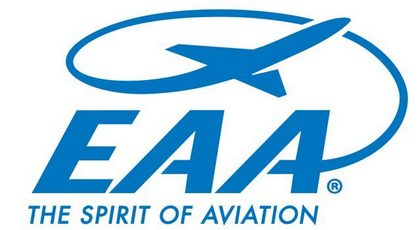 EAA CHAPTER 322 With our MACH program (Member Awards for Chapter Help), your membership could win you a trip to Oshkosh! Click on the link below today to renew or join! www.eaa.org.za/membership/membership-form or for EAA membership information go to www.eaa.org.za   The following events will to take place under the rules controlling the number of people congregating together and are therefore not open to the general public. 30 JANUARY 2021 SAPFA Rand Airport challenge Contact Frank Eckard E-mail: frank.eckard@mweb.co.za Cell: 083 269 1516 30 JANUARY 2021 SAPFA AGM at Rand Airport after the rally Contact Rob Jonkers E-mail: rob@aerosud.co.za cell: 082 804 7032 30 & 31 JANUARY 2021 POSPONED Sport Aerobatic Club Gauteng Regionals Vereeniging Airfield Contact Annie Boon E-mail: chunge@mweb.co.za  3 FEBRUARY EAA Chapter 322 monthly meeting virtual and Dicky Fritz MOTH hall. Contact Neil Bowden E-mail: neil1@telkomsa.net Cell: 084 674 5674 5 & 6 FEBRUARY SAPFA Witbank Speed Rally at Witbank Airfield Contact Jonty Esser E-mail: jonty@promptroofing.co.za Cell: 082 855 9435 27 FEBRUARY EAA Chapter 322 drive-in or fly-in night at Jack Taylor Krugersdorp. We will show a movie on a giant screen on the airfield. Members can drive in or fly in (camp that night on the field). The planned movie is 'Flying the Feathered Edge' with Bob Hoover. Contact Neil Bowden E-mail: neil1@telkomsa.net Cell: 084 674 5674 26 & 28 FEBRUARY Sandstone Steam Festival Contact 051 933 2235 Website: www.sandstone-estates.com  3 MARCH EAA Chapter 322 monthly meeting virtual and MOTH hall Contact Neil Bowden E-mail: neil1@telkomsa.net Cell: 084 674 5674 6 MARCH SAPFA Morningstar ANR Morningstar Airfield Contact Tony Russell E-mail: tonyr@therussells.co.za Cell: 0832640107 6 & 7 MARCH Sport Aerobatic Club Judges Trophy Venue TBA Contact Annie Boon E-mail: chunge@mweb.co.za 12 & 13 MARCH Bethlehem Aero Club event TBA Contact Stephan Fourie E-mail: fouriesj1491@gmail.com Cell: 072 344 9678 16 MARCH Aero Club of South Africa AGM venue TBA Contact Rob Jonkers E-mail: rob@aerosud.co.za Cell: 082 804 7032   KIM PRATLEY SA AVIATION LEGEND AND GOOD FRIEND PASSES AWAY 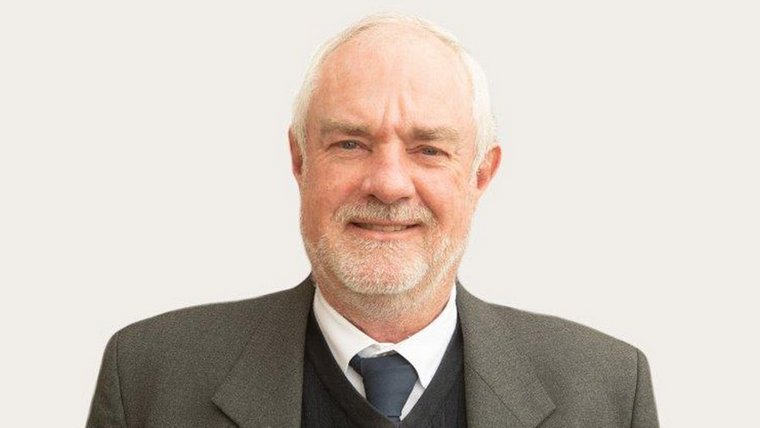 Kimleigh George Montague Pratley was born in March 1954, son of George Montague (Monty) Pratley the founder of Pratley Engineering in existence now for over 70 years. I believe that almost every South African DIY'er and beyond, has at some stage in their lives including NASA on the unmanned Ranger Missions during the mid-sixties, used a Pratley product to fix or sort out a problem should it arise. So from NASA to a broken vase, to fixing a leak, sealing a swimming pool or a million other things requiring some kind of fix, has reached out for the Pratley brand. Kim's deep aviation roots go back as far as the development of the jet engine. Monty Pratley was on the team with Frank Whittle in the UK that developed the Jet engine as we know it today. Kim also loved engines, any engine. At his museum at his beautiful home he would start all of them and they would run in unison, whilst he was attending to them chugging away in his white overall beaming a huge smile. He was always an unassuming remarkable man. Kim joined the Krugersdorp Flying Club in 1968 and learnt to fly at Reef Air along with his dad. An honorary and very active member that was hugely contributory for over 50 years. Kim held a multi engine fixed wing ALTP and Instructor rating and a Commercial Rotor Wing licence. He represented the flying club on a myriad of requirements for many years, gave freely of his time and could also put together at short notice, very informative and interesting aviation topics and safety presentations for the members. His superb knowledge of the subjects he presented, filled the clubhouse to the brim every time. As the vice chairman and responsible for the Safety and Legal Portfolio he along with the committee, navigated and faced many challenging times, Kim was always the sound of reason, no matter what the situation posed. His words were, "We must continue to do the right thing! And the outcome will be perfect" … and it was. He was firm, fair and did not suffer fools easily, he was appalled by dishonesty, and his attention to detail was astounding. The support and guidance he gave to me along with Cecile our longstanding secretary and the flying club committee during my tenure as past chairperson, I will cherish forever. I was very privileged to spend time with Kim during my initial ppl training some thirty-five years ago. He would fly with the Reef Air students when "Oom Frik" the resident instructor was busy flying surveys for the mines at JCI. Kim helped me and many others as fledgling pilots to better understand Krugersdorp airfield approaches and landings, so that we could all be able to use the aeroplane again. I always jumped at the opportunity to fly with him in his beloved Cessna RSTOL 210, my all-time favourite aircraft. The Pratley 210 is probably one of the only one owner from new, no damage history, Cessna 210's around in the world today. His night landings at Krugersdorp in his Cessna 421 were unbelievable. Undeniably a man of many talents and understood his machines. A devoted family man who loved his dogs and taught them extraordinary things. The family Golden Retriever was an "Aviation Mutt". It could dive off their diving board just like an Olympic swimmer. Galloping down the plank with gusto, spring boarding itself leaping into the air, and for a split second this hairy missile, ears streamlined back, gliding to an imminent thunderous splash. This was followed by an energetic doggie paddle back to the stairs, and off it would go again. This dog also could taxi a Cessna 172. One fine Saturday afternoon, a 172 with a dog at the helm taxiing past the clubhouse sitting in the pilot's seat. At bar stool level you couldn't see that in the right hand seat, Kim was crouched down hiding from view keeping it straight, whilst the Big Dawg was casually glancing out the pilot's window and over the instrument panel seemingly doing a great job of the taxiing? One of the regulars welded to the pub, leapt out of his bar stool and yelled "Waar gaan daai hond in Pratley's se Aeroplane!!!" My first ride in a piston helicopter was with Kim in his pristine Bell 47 that has been in the Pratley stable since the early 70's. Me being a piston engine nut, it was just simply fantastic, he really took time to show how this ole' warbird heli flies. Ironically my last flight with Kim was in his Hughes 500, some months back. I helped pack the back seats of the Heli with all kinds of fruit grown from the orchard at his home, we flew to the Shalom Respite Care Centre just west of Magaliesburg to distribute to the care givers and residents at the centre. Kim and Val over the years have provided much love and support to this facility. Lt Col Kim Pratley, was also very active in the SAAF and was OC of the 104 Squadron. He flew support in the SAAF in the squadron and in later years flew a few of the SAAF museum aircraft as well. Kim gave a lot of his time and expertise to make a difference in many people's lives. Kim really enjoyed spending time with his grandsons teaching them all kinds of science related mischievous things was a blast. We roared with laughter when he showed me how Charles' little boy Parker, could burn a hole in a piece of cardboard with a magnifying glass reflecting the sun. We both agreed it's probably not a good time now to show Lil' Parker some Pratley Quickset Epoxy or Super Glue just yet, he along with us would be never forgiven. We are all deeply saddened at your passing, Kim we take solace that Val and your special family will continue the Pratley legacy in business and aviation with solid family values that you so steadfastly entrenched and portrayed, and as for that CAT D6 Bulldozer on that glue joint you hung over your desk and you sat under in the mid-eighties and recently again, Andrew and Charles are probably going to make it fly. You always said ""Impossible - what nobody can do until somebody does it" Godspeed my good friend!! Take Care up there and we are all going to miss you dearly, Krugersfornia is never going to be the same. . Paul Lastrucci Past Chairperson Krugersdorp Flying Club Watch a Celebration of life for Kim 29 Jan 2021 @12h00 SAST www.youtu.be/yCTvogD-05s TARRAGON PLAN TO EXPORT NO LESS THAN 10 LATVIAN MADE AIRCRAFT THIS YEAR The aim of Latvian aircraft manufacturer Tarragon is to produce as many of these aircraft as possible in Latvia. Currently, among existing customers of Tarragon is driver for F1 as well as a rider in MotoGP, whose names cannot be disclosed. Tarragons aircraft are ultralight and their weight is only 337-380 kg. They can reach speeds of up to 370km/h, and can cover distances of up to 1300 km. To obtain the right to fly, a pilot's license is required, however such aircraft will be more suitable for an experienced professional. These aircraft can fly at an altitude of 3-3,5 km. The low weight and aircraft manoeuvrability is achieved by way of carbon fibre materials in the production of the fuselage, which is similar to how Formula-1 cars are produced. Ingemars Butkevics, representative for Tarragon and pilot:" We have just moved the factory from Adazi to Riga and the area of the new site is 4500 m2. We work with the professionals in the field and are happy to invite mechanics and CNC metalworking engineers to join our team. The production of a single aircraft takes up to half a year and we are striving to increase our productivity. In the next year, we plan to enter the Italian market and the next market to research is French. These aircraft are just like a favourite toy for a man. A private aircraft is more than just a vehicle - it is a style of military, it's exclusive and each aircraft is designed individually for each client. You can choose the engine, propeller, paint design, avionics and interior decoration - this is how clients' dreams come true. The cost of one aircraft is about 200 thousand euros, and to receive a pilot's license you are required to pass a 9-month training course, which will cost around 4500 euros". With the development of small aircraft, flights are becoming more accessible and convenient. If previously, flying on a private aircraft, for example, abroad for a meeting was considered to be exclusive, this practice is now becoming more common in Baltic countries as well. Currently, a flight to Warsaw in a private aircraft is much more economical than a commercial aircraft, as rational economy of time in business is crucial. For example, you fly out with Tarragon at 10:00, in 2 hours you arrive in the polish airport, at 13:00 you have a meeting, and at 15:00 you can already fly back, saving you both time and spending on hotel expenses. Within a day, you are able to be at a meeting abroad and come back to Riga while only spending 200-250 euros. Latvian produced Tarragon aircraft are active in the skies of Latvia, Lithuania, Italy, Spain, USA, Mexico, Switzerland, Belgium and Germany.  In its over 40-year history, more than 1,100 Bell 412s have been delivered across the globe, logging over 6.5 million flight hours. Customers continue to rely on the rugged and reliable Bell 412, which carries operators through parapublic, offshore, emergency medical and even VIP missions every day. From moving employees to oil rig sites off the coast of Africa, to fighting fires in Australia, to presidential duties in Asia, the platform brings exceptional performance, impressive cargo-carrying abilities and power to each job. The most advanced version of the platform, the Subaru Bell 412EPX, now has an increased maximum internal weight of 12,200 pounds, an external weight of 13,000 pounds and can carry up to 5,000 pounds of goods with a cargo hook. Having the widest loading door in its class enables quick unloading and loading into a spacious cabin that seats 14 passengers. As a joint partnership between Bell and Subaru to support the Japan Ground Self Defence Force, the Subaru Bell 412 EPX benefits from a more robust main rotor gearbox that has 11% more horsepower capability. It has been certified to run without oil (run dry) for up to 30 minutes for improved safety along with other evolutionary features. With these upgraded capabilities, the aircraft maintains its highly revered status as the true workhorse in the industry.  Helicopteres Guimbal received Russian Federal Air Transport Agency (FATA) type certification for the Cabri G2 helicopter on Dec. 24. This significant certification is a conclusion to a process started in 2019, which included extensive technical exchanges and a thorough flight evaluation. Russia is the 40th country to certify the Cabri G2. FATA certification opens the largest market thus far for the Cabri G2 and Helicopteres Guimbal has already identified two customers. Russia is a very mature helicopter market and certification there has specific requirements on climate and flight manuals. In 2020, Helicopteres Guimbal delivered 16 new helicopters (excluding the VSR 700 UAV program), down 20 percent from 2019. The quasi-totality of the world fleet has been impacted by flight restrictions or grounding due to the Covid-19. However, the company's order book is significantly improving compared to the end of 2019, a globally bad year for civilian helicopters. According to CEO and owner Bruno Guimbal, "the company enters 2021 in good shape, with intact team and skills and exciting projects for the future."  The aircraft will arrive at Shannon Airport and will be operated by ASL Airlines Ireland, a FedEx ATR operator since 2000, as part of the FedEx Express Feeder fleet. This global fleet allows the company to provide fast, economical services to small and medium-sized business areas around the world. The most fuel-efficient regional aircraft, the ATR turboprop is a popular choice for cargo and passenger operators committed to a more sustainable aviation industry for the future. ATR has extensive experience in the regional freighter market. There are currently around 130 converted ATR freighter aircraft in operation, representing one third of the global regional freighter fleet and this brand-new ATR 72-600F incorporates the benefits of this knowledge to provide FedEx with a freighter that conforms to needed requirements. With the changing market and the growth of e-commerce, the ATR is perfectly suited to connect communities and economies around the world. FedEx Express operations can now benefit from the unique advantages offered by the ATR 72-600F's 75m3 freight capacity. The purpose-built freighter's fuselage is a clean design, optimised for cargo and has been delivered by the turboprop manufacturer's Italian shareholder Leonardo, from their facilities in Naples. The aircraft's large cargo door facilitates the optimal loading of nine tonnes of payload and offers the option of carrying either bulk cargo or, when in Unit Load Device (ULD) mode, five 88" x 108" pallets or up to seven LD3 containers. Pilots can benefit from the latest upgradable Standard 3 avionics suite in the ATR 72-600, allowing the introduction of continuous cockpit innovations that improve efficiency. Jorn Van De Plas, Senior Vice President Air Network and GTS Europe, FedEx Express said: "Today's delivery of the first ever purpose-built regional ATR freighter marks an exciting new chapter for our FedEx Express Feeder fleet. This is an important step in our fleet renewal strategy, ensuring we remain the most flexible, reliable and responsible network in the business. "During what has been a difficult year both for businesses around the world and for communities, we are proud to remain at the heart of efforts to keep trade flowing and deliver goods across Europe. This new ATR Feeder delivery lines up with our overall 'Reduce, Replace, Revolutionise' sustainability approach, replacing older, less efficient aircraft in a more sustainable way." As part of the FedEx Express commitment to circularity, the two aircraft being replaced by the new ATRs will be donated to Madrid airport where they will be used for fire services training. These will be the 97th and 98th planes FedEx has donated at the end of their service in the fleet. This delivery is an encouraging move for the logistics and air cargo industry in how they can continue to support the economy around the globe.  The U.S. Army is looking for agility at the X for their Future Long-Range Assault Aircraft (FLRAA) program and Bell is ready to deliver with the capable Bell V-280 Valor. .jpg) During the flight, the necessary checks were performed on the updated general aircraft systems and on-board electronic equipment installed as part of a comprehensive modernization of the aircraft, as well as the performance of the new NK-32-02 engine developed and manufactured by United Engine Corporation. According to the crew's data, the flight systems and equipment worked flawlessly. Tu-160M ??is a thoroughly modernized strategic bomber based on the Tu-160 ("White Swan"), the largest and most powerful supersonic aircraft with variable wing geometry in the history of military aviation. The Tu-160M ??is capable of speeds up to 2000 km / h. The first experimental Tu-160M ??was created as part of a large-scale modernization program for combat aircraft systems of strategic and long-range aviation, which is currently being carried out by Tupolev PJSC. The first flight of the prototype aircraft took place on February 2nd this year.  Australia has selected Boeing's AH-64E Apache Guardian as its next armed reconnaissance helicopter, replacing its Airbus Helicopters Tiger fleet under the Land 4503 program estimated to be worth AU$4-5 billion (U.S. $3-3.8 billion). "The Apache Guardian is the most lethal, most survivable and lowest-risk option, meeting all of the Department of Defence's capability, through-life support, security and certification requirements," Reynolds said. "By pursuing a proven and low-risk system offered by the Apache, the Department of Defence will avoid the ongoing cost and schedule risk typically associated with developmental platforms." Reynolds said the issues with the Tiger fleet and other Australian military rotary-wing projects had informed the strategy to seek a proven and mature replacement. Boeing said the AH-64E provides Australia with a fully integrated, battle-proven capability and will continue to expand its industry capability and supply chain in Australia. "Apache is supported by an active production line and a U.S. Army modernization plan through to the late 2040s, thereby ensuring the platform remains the leading attack and reconnaissance capability through to 2050 and beyond," a company spokesperson said.  FRANCE SIGNS AGREEMENT TO PURCHASE NORTHROP GRUMMANS E-2D ADVANCED HAWKEYE The LOA allows the U.S. Navy to begin contracting activities with Northrop Grumman for production of E-2D airborne command and control aircraft. The signed LOA secures the sale that will include three E-2D aircraft, non-recurring engineering, spares, repairs and support equipment, training and follow-on support, within the congressional approval funding limit. The anticipated contract award will be in 2022 with aircraft delivery to France in 2028 at the latest. The French Navy has been operating the E-2C Hawkeye since 1998 and is the only country other than the United States to operate its E-2 Hawkeyes from an aircraft carrier. This capability enables interoperability exercises that support Hawkeyes from each other's carrier flight decks. With the U.S. Navy's fleet transition to E-2D squadrons, the French Navy intends to maintain interoperability and partnership by taking steps to procure three E-2D aircraft. The E-2D is the U.S. Navy's premier airborne command and control aircraft for all targets and all environments. It delivers advanced radar capability for unmatched detection and tracking. Additionally, it provides 360-degree simultaneous air and maritime surveillance, enabling nations to protect sea lanes, monitor coastlines and support civilian emergency coordination operations. The E-2D is a force multiplier for interoperability, reciprocal information sharing and commonality across the battle force. Northrop Grumman solves the toughest problems in space, aeronautics, defence and cyberspace to meet the ever-evolving needs of our customers worldwide. Our 90,000 employees define possible every day using science, technology and engineering to create and deliver advanced systems, products and services."  VOLOCOPTER LAUNCHES CAMPAIGN TO BRING ELECTRIC AIR TAXI SERVICES TO U.S. CITIES Volocopter is the first and only electric vertical take-off and landing (eVTOL) company in the world with Design Organization Approval (DOA), the license to develop and build certified aircraft from the European Union Aviation Safety Agency (EASA). The company is currently in the process of receiving EASA Type Certification for their VoloCity aircraft. Volocopter is seeking FAA approval to enter the U.S. market concurrently with its EASA type certificate to accelerate its worldwide expansion. Volocopter boasts ten years of full-scale aircraft testing experience, substantial international partnerships and investors and an electric air taxi design fit for intra-city transport and certification. Through long-standing, fruitful relationships with cities/states like Singapore, Paris, and Dubai, Volocopter has already demonstrated their expertise in electric flight for inner-city mobility. Compared to other eVTOL players in the UAM industry, Volocopter is focused on promoting seamless, 100% electric mobility within congested cities. "We are the 'Pioneer of Urban Air Mobility' and our accomplishments are setting the stage for more extensive adoption of UAM implementation by our industry. By focusing on a collaborative approach to success, we are bringing excellence, expertise and experience to the table together with our partners. With that, we are leading the way to bring urban air mobility to life in cities around the globe," said Florian Reuter, CEO of Volocopter. "From the beginning, we have considered the U.S. an important market for our services. Certification is the key to this market and we are excited to begin the process of seeking approval from the FAA to introduce this innovative era of mobility not only in Europe and Asia, but also in the U.S." The VoloCity, Volocopter's electric air taxi, is designed to meet the highest aircraft safety standards and features the lowest noise development in the industry. Volocopter developed the VoloCity specifically to meet growing demand for better intra-city mobility in large cities like Los Angeles, New York City, San Francisco and Washington D.C., among others. These air taxi services would promote local job opportunities, save people time and reduce costs associated with spending hours in traffic by simply flying over it. Furthermore, Volocopter's business plan aims to provide scalable air taxi services at costs comparable to regular taxi services. Volocopter is currently working with EASA on certification for commercial launch planned in the next 2-3 years. When Volocopter receives type certification approval from EASA, immediately followed by the FAA validation in this timeframe, they will be positioned to enter the electric air taxi market first and pave the way for the UAM industry to expand services globally. By offering concurrent type certificate validation, the FAA gives aircraft manufacturers like Volocopter the opportunity to show that they are fulfilling the necessary requirements parallel to being certified by the primary authority of the company's current jurisdiction, e.g., EASA. This format promotes open communication about certification and safety qualifications internationally for aircraft like the VoloCity. Volocopter is stepping into the spotlight to lead the UAM industry towards commercial electric air taxi services by orchestrating a complete UAM ecosystem with their innovative backend - the digital operating system VoloIQ, an open API platform for the UAM industry. This will benefit the entire industry with optimal passenger experience, highest level of operational safety, partner integration for logistics, infrastructure, and suppliers and productive regulator and city collaboration for implementing these services.  RSA  RSA, near Ceres, Western Cape: A Bell 206B Jet Ranger II crop-dusting helicopter struck electricity wires and crashed near Ceres, Western Cape. The pilot did not survive the crash and the helicopter was destroyed. (File photo. Not the accident aircraft) RSA, between Ladysmith and Colenso, KwaZulu-Natal: A Netcare 911 Bell 430 ambulance helicopter "Netcare 1" crashed in open fields between Ladysmith and Colenso, KwaZulu-Natal. During the accident sequence, a main rotor blade hit the vertical stabilizer and the tailboom separated. All five occupants (pilot and four medical personnel) perished and the helicopter was destroyed by a post-crash fire. RSA, between Bultfontein and Hoopstad, Free State: An Air Tractor AT-402B operated by Krokodilkraal Boerdery Trust had completed crop spraying at Bultfontein and went missing on the return leg to Hoopstad. After a search by SAPS helicopter, the wreckage was found inverted in a field between the two locations. The pilot did not survive.  Mauritius: An Air Mauritius Avions de Transport Regional ATR-72-212A on a flight from Mauritius to Rodrigues Island (Mauritius) with 65 people on board, was enroute to Rodrigues Island when the crew decided to return to Mauritius due to some technical problem. The aircraft landed safely back in Mauritius about 30 minutes after departure. Passengers reported that there were severe vibrations of the airframe, prompting the return to Mauritius. Chile, Santo Domingo, Valparaiso: An Armada de Chile (Chile Navy) Bell UH-57B (Bell 206B) JetRanger III with two occupants on board hit a small drone, resulting in a cracked windscreen and injuries to an occupant (not the pilot). Photos of the drone suggest it was a DJI Mavic Air 2 (0.57 kg).  Mexico, Los Mochis-Federal Airport: A Global Avionics LLC Canadair CL-600 Challenger 600 with two on board suffered a runway excursion at Los Mochis Airport (LMM/MMLM), Sinaloa, Mexico. One of the two pilots received minor injuries. The aircraft, which had undergoing repairs for a month, was trying to conduct a test flight when directional control was lost on take-off. Brazil, near Porto Nacional-Associação Tocantinense de Aviação Airport: A Brazil Beechcraft 95-B55 Baron operated by Construtora Meirelles Mascarenhas Ltda with six on board on a non-scheduled/charter/air taxi flight impacted an open field immediately after take-off from Porto Nacional-Associação Tocantinense de Aviação Airport (SWEJ), TO, and a post-crash fire ensued. The pilot and five passengers perished in the accident. The passengers included a manager of the Palmas Futebol e Regatas club and four players. According to the Brazilian aircraft register, the aircraft was not allowed to be used for air taxi purposes  UK, Exeter: A West Atlantic Boeing 737-400 freighter on a flight from East Midland to Exeter,EN with 2 crew when landing at Exeter, suffered a very hard touch down. The aircraft rolled out without further incident. No injuries are being reported. Locals report a post flight inspection found creases around the fuselage to the extent that Royal Mail was unable to unload the mail. USA, Richmond Hill, Bryan County, GA: A Delaware Corp Cessna 177RG Cardinal RG with only the pilot on board. Following a loss of engine power, the aircraft force landed to open field terrain in Richmond Hill, Bryan County, Georgia. The airplane sustained substantial damage and the sole pilot onboard received minor injuries.  Peru, San Martín de Pangoa: The Ejército del Perú (Peruvian Army) lost one of its few remaining Agusta A109K2s when one operated by Batallón de Reconocimiento y Ataque 811 crashed around the hamlet San Martín de Pangoa, 400 metres from Mazamari airfield. It was conducting flights in the vicinity. Luckily, the passengers and crew survived the incident, but were all taken to a nearby hospital. USA, Cow Key channel, Key West, FL: A de Havilland DHC-3 Otter operated by Single Otter Leasing LLC with three occupants following a loss of engine power, force landed to the waters of Cow Key channel east of its point of departure at Key West International Airport. The float equipped airplane was not damaged and the three occupants onboard were not injured during the incident.   21 JANUARY 1921 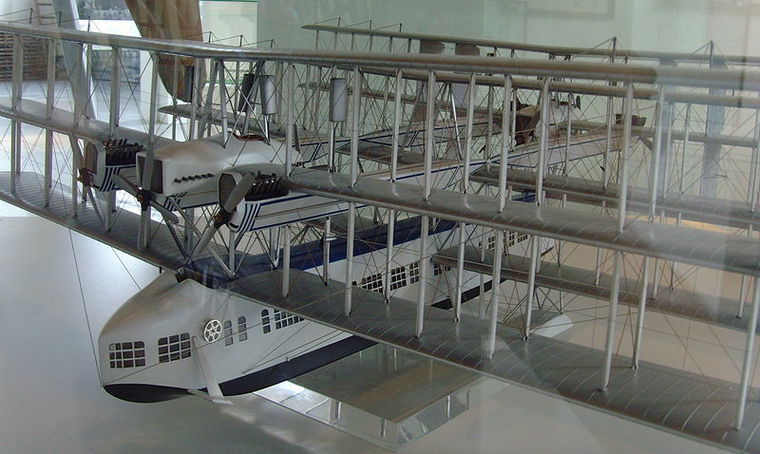 The first triple-triplane aircraft and the first passenger-carrying aircraft designed to carry more than 100 people that actually got off the ground, was launched at Lake Maggiore, Italy. The flight attempt ended in failure when the 55,000 lb. flying boat nosedived into the lake. Photo Klaus Nahr/commons.wikimedia.org The C60 was further damaged when the wreck was towed to shore and, in spite of Caproni's intention to rebuild the aircraft, the project was soon abandoned because of its excessive cost. The few surviving parts are on display at the Gianni Caproni Museum of Aeronautics and at the Volandia aviation museum in Italy.  PLEASE GO TO www.youtube.com/channel/UCCuRVZAGodT6sztTeXBGeMw and subscribe to our YouTube channel  |
                                    |
 |
 |

Copyright © Pilot's Post PTY Ltd
The information, views and opinions by the authors contributing to Pilot's Post are not necessarily those of the editor or other writers at Pilot's Post.